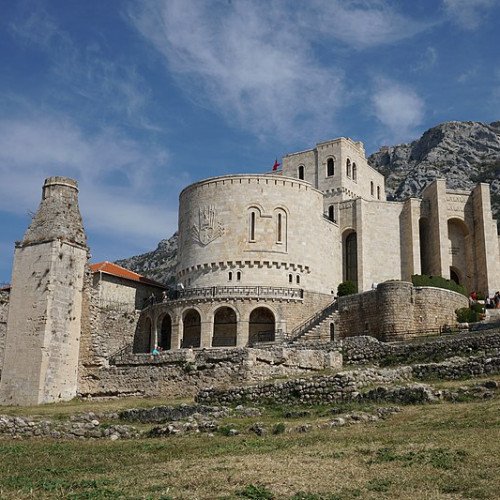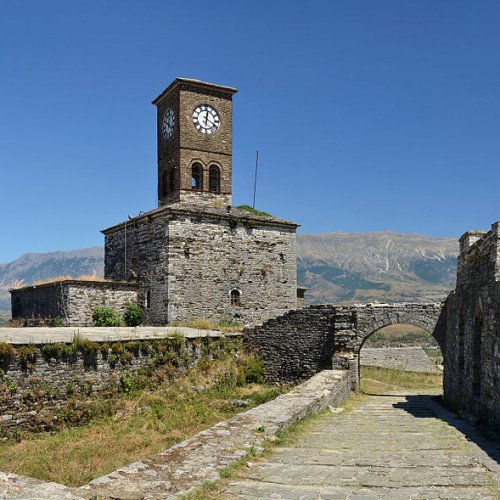Castles of "Albania" KRUJË CASTLE vs GJIROKASTËR FORTRESS

KRUJË CASTLE
The Krujë castle (Albanian: Kalaja e Krujës) is a castle in the city of Krujë, Albania and the center of Skanderbeg's rebellion against the Ottoman Empire. Inside the castle is the Teqe of Dollme of the Bektashi (an Islamic Sufi sect), the National Skanderbeg Museum, the remains of the Fatih Sultan Mehmed mosque and its minaret, an ethnographic museum and a Turkish bath. During the Albanian Revolt of 1432-1436 the city was unsuccessfully besieged by Andrea Thopia and Ottoman rule was restored. After Skanderbeg's rebellion in 1443 the castle withstood three massive sieges from the Turks respectively in 1450, 1466 and 1467 with garrisons usually no larger than 2,000-3,000 men under Skanderbeg's command. Mehmed II "The Conqueror" himself could not break the castle's small defenses until 1478, 10 years after the death of Skanderbeg. Today it is a center of tourism in Albania, and a source of inspiration to Albanians. Krujë Castle is situated at an elevation of 557 metres (1,827 ft).
Statistics for this Xoptio

GJIROKASTËR FORTRESS
Gjirokastër Castle (Albanian: Kalaja e Gjirokastrës or Kalaja e Argjirosë) is a fortress in Gjirokastër, Albania (during Ottoman rule it was historically known as Ergiri while local Greeks referred to it as Argyrokastro, a name applied also to the castle). Gjirokastër Castle is situated at a height of 336 metres (1,102 ft). The castle dominates the town and overlooks the strategically important route along the river valley. It is open to visitors and contains a military museum featuring captured artillery and memorabilia of the Communist resistance against German occupation, as well as a captured United States Air Force plane to commemorate the Communist regime's struggle against the imperialist western powers. The citadel has existed in various forms since before the 12th century. Princess Argjiro inspired Albanian author Ismail Kadare in a poem he wrote in the 1960s. According to local Albanian folkloric traditions she lived in the 15th century and jumped off Gjirokastër Castle along with her child so as to avoid being captured by the Ottomans. Extensive renovations and a westward addition was added by Ali Pasha of Tepelene after 1812. The government of King Zog expanded the castle prison in 1932. Today it possesses five towers and houses, the new Gjirokastër Museum, a clock tower, two teke , a cistern, the stage of the National Folk Festival, and many other points of interest. The castle's prison was used extensively by Zog's government and housed political prisoners during the Communist regime. The castle is under protection from UNESCO.